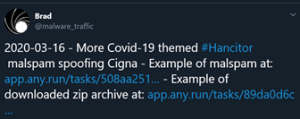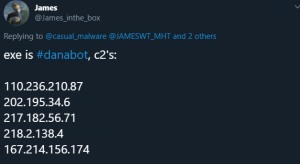By the Intel 471 Intelligence Analysis team.
Our lives continue to be inundated with emails, mobile applications and websites that promise to deliver critical information related to the Coronavirus Disease 2019 (COVID)-19 pandemic threatening millions of people across the globe. Fear surrounding the disease has been exploited by attackers with adverse intentions who have launched campaigns including business email compromise (BEC), phishing and malicious domains. These domains can be used to push disinformation, malware, ransomware, steal passwords or personal information and by possible nation-state hackers to conduct reconnaissance. For example, the cybersecurity digital magazine SC Media reported an Android application was available at coronavirusapp[.]site. The app later was dubbed the CovidLock Android ransomware and claimed to provide access to real-time virus tracking. However, the app instead was found to be disguised ransomware that locked victims’ phones using a screen-lock attack.
Several open source reports claimed similar phishing campaigns leveraged the recent COVID-19 outbreak and widespread fear of the virus for personal gain. These phishing campaigns were used in attacks targeting individuals in the U.K and U.S, via highly enticing links in emails from attackers that impersonated departments of the U.S. government, health officials, university personnel and the World Health Organization (WHO) warning of new infections reported in the local area and providing safety measures.
Themed malware campaigns arise
Intel 471 observed similar instances of phishing campaigns advertised in the underground. On Feb. 22, 2020, a newcomer to the Russian-speaking underground offered to sell a “new exploit” and coronavirus “phishing method” that leveraged the COVID-19 outbreak as bait. The actor stated the exploit would load a functional online map of the COVID-19 infected areas with additional data. The map was promoted as interactive, resizable and allegedly contained real-time data from the WHO and other sources. The actor assumed users would mistake the malware as an actual map, open and forward it on to friends and naturally increase the malware’s infection rate. According to the malware description provided by the actor, the loader was fully undetectable (FUD) and could bypass Windows Defender anti-virus software. The actor also claimed the malware supported all Windows versions from Windows XP and newer, although it required a version of Java Runtime Environment (JRE) software be installed on the system. The malware with the actor’s code-signing certificate was priced at US $700 and an unsigned malware sample was priced at US $200.


Separately, several operators of notable malware groups utilized COVID-19 themed attacks, including AZORult, DanaBot, Emotet, Hancitor and Smokeloader. Based on information provided in open sources, the Intel 471 malware intelligence team independently observed known hashed malicious files downloaded from known malicious domains that used a command issued by a controller. These events linked the Hancitor and Smokeloader campaigns based on files dropped and the command and control (C2) infrastructure. Additionally, we observed AZORult utilized malignant COVID-19 themed C2 infrastructure to exfiltrate victim data.

The advantageous methods employed by threat actors substantiates the increased importance of being highly suspicious of communications not verified by official sources which appear to provide information or goods related to the ongoing pandemic.
GIRs
1.1.1 Ransomware malware
1.1.2 Mobile malware
1.1.3 Remote access trojan (RAT) malware
1.1.4 Banking trojan malware
1.2.5 Spamming services
4.4.1 Phishing
6.2.4 Europe
6.2.7 North America
Sources
[1] 16March2020 SC Media article: Password found to rescue victims of malicious COVID-19 tracker app
[2] 01Feb2020 Bleeping Computer article: Coronavirus Phishing Attacks Are Actively Targeting the US
[4] 16March2020 Twitter post: @malware_traffic
[5] 31Jan2020 TrendMicro blog: Emotet Uses Coronavirus Scare in Latest Campaign, Targets Japan
[6] 16March2020 Twitter post: @James_inthe_box
[7] 16March2020 Twitter post: @malwrhunterteam




